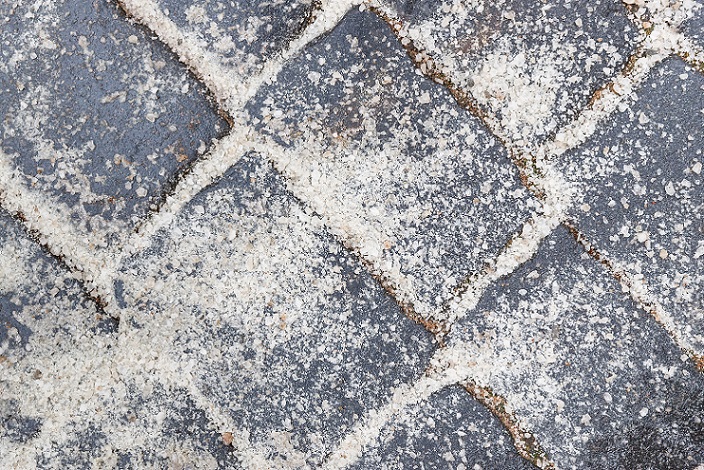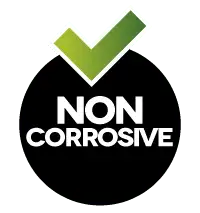
EcoGrit Ice Melt | Safe for Children and Pets, Any Surface | Non-Toxic Light-Weight Easy Application | Protects from Snow and Ice for up to a week.
EcoGrit provides a fantastic ice melt that is environment-friendly and pet-friendly
When it comes to clearing ice effectively, the best methods are usually the most versatile. Many seemingly easy tricks can end up making the situation worse, such as throwing boiling water over a surface, only to see it freeze into an even more treacherous sheet of ice a short time later. The best option by far is to use a specially formulated ice melt that contains effective ingredients to get rid of ice and snow quickly and safely.
EcoGrit is a salt-free ice melt that turns ice and snow back into water harmlessly. It won’t leave any toxic residues that can get into surrounding ecosystems and wildlife habitats either. Best of all, it can be used as grit or granules, or a liquid spray for even greater flexibility. So, which is the better approach for using ice melt? Ice melt Grit versus spray?
The thing about ice and snow is that frozen water doesn’t discriminate when it comes to where it ends up after a snowfall or arrival of sub-zero temperatures. That means that some of the top tips out there, such as leaving a blanket over a car windscreen or putting sandy grit down on a driveway will not work in every single icy situation.
What happens when you need to free up an icy padlock or car lock? Or the metal railings that you rely on not to fall over while walking along the path are too frozen to grip? This is where the versatility of being able to use EcoGrit as grit or a spray becomes so important. Here are some more scenarios where being able to have a choice between ice melt grit or spray is paramount.
Frozen surfaces like pavements, roads and driveways often require fairly rapid clearing in order to get vehicles out safely or to stop pedestrians from slipping over. Using grit can really speed up the process as it can be spread over a wider area more effectively than using a handheld spray bottle. The granules can also remain on the surface and carry on working for up to seven days. They are less likely to be washed away by any rain or run off with the melting ice or snow into the ground.

Using salt-free ice melt grit, such as EcoGrit, will prevent corrosive chemicals from the salt from getting into the garden’s delicate ecosystem, as well as into surrounding habitats and water systems. Applying salt-free grit to paths and patios will also help prevent damage to pets’ paws and the undersides of people’s boots and shoes. Use EcoGrit ice melt grit in the garden on frozen surfaces that people will walk on, as well as to cover any stone statues or other precious garden ornaments to protect them from the worst of winter’s frozen conditions.
Cars, vans, bicycles, motorbikes etc. can all benefit from spray, whatever the areas being treated. Spraying ice melt onto a frozen windscreen will help clear the ice and frost in much less time than leaving it to melt on its own. You can also spray motorbike mirrors, car side windows, headlights, roofs, side panels, registration plates and more to clear the whole vehicle before setting off. Keep a spray bottle inside the car for easy ice clearing on the go – it is easy to use and will weigh less than a bag of ice melt grit.
Choose a spray ice melt for more intricate jobs such as unfreezing railings, padlocks and gates. The spray will stick to non-flat surfaces far better and get to work straight away in melting the frozen water that is impeding your access to whatever is underneath. You can also keep a smaller spray bottle to hand that can be quickly grabbed when you need to sort out a railing or gate – no need to lug a heavy bag of grit from the garage or storeroom.
Finally, make sure that you use a salt-free ice melt when treating areas where animals can come into contact with it. Salt can damage paws, hooves and delicate insides. It can also cause harm when left to mix with the melted ice and run off into the groundwater and surrounding habitats.
Choose a salt-free ice melt such as EcoGrit for peace of mind. Here, you can also benefit from keeping stores of grit and spray ice melt in for different de-icing jobs. Spread ice melt grit over yards, paths, stables and roads and use your sprays liberally on farm equipment, safety gates fences and padlocks to keep everything working as it should over the chilly winter months.
EcoGrit
20 Harbour View
Truro
Cornwall
TR1 1XJ

EcoGrit provides a fantastic ice melt that is environment-friendly and pet-friendly

With the return of winter and the inevitable widespread use of rock salt gritting, the RSPCA is warning to check pets’ paws and fur if






EcoGrit is an environmentally conscious company that would like to serve the people by offering them education, insight, “peace of mind” and the chance to make a positive difference on a monumental scale at a time when winter weather patterns are becoming more unpredictable.
VAT (Value Added Tax) Number: 340 3662 26
EcoGrit provides a fantastic ice melt that is environment-friendly and pet-friendly
© 2023 EcoGrit Ltd